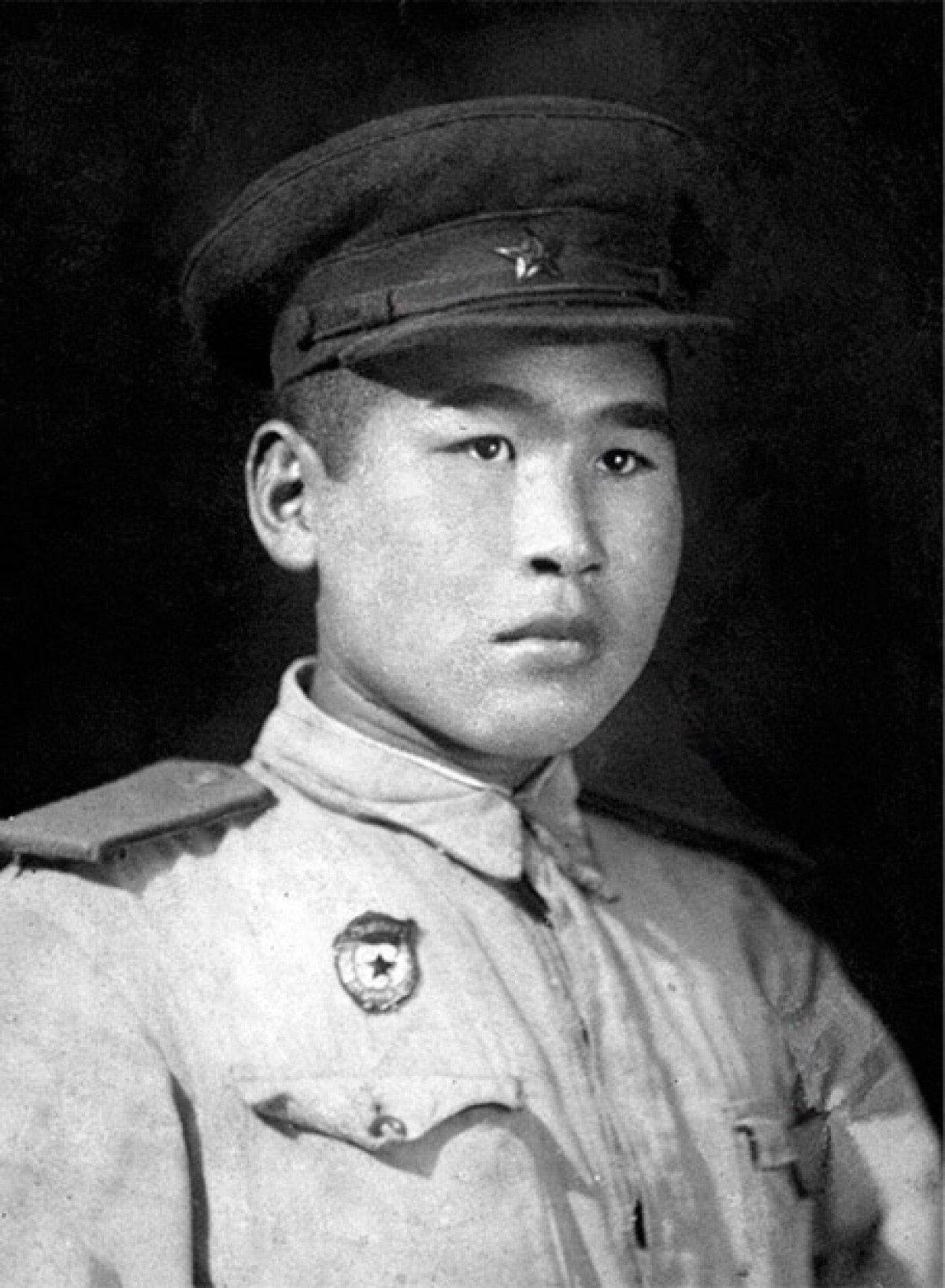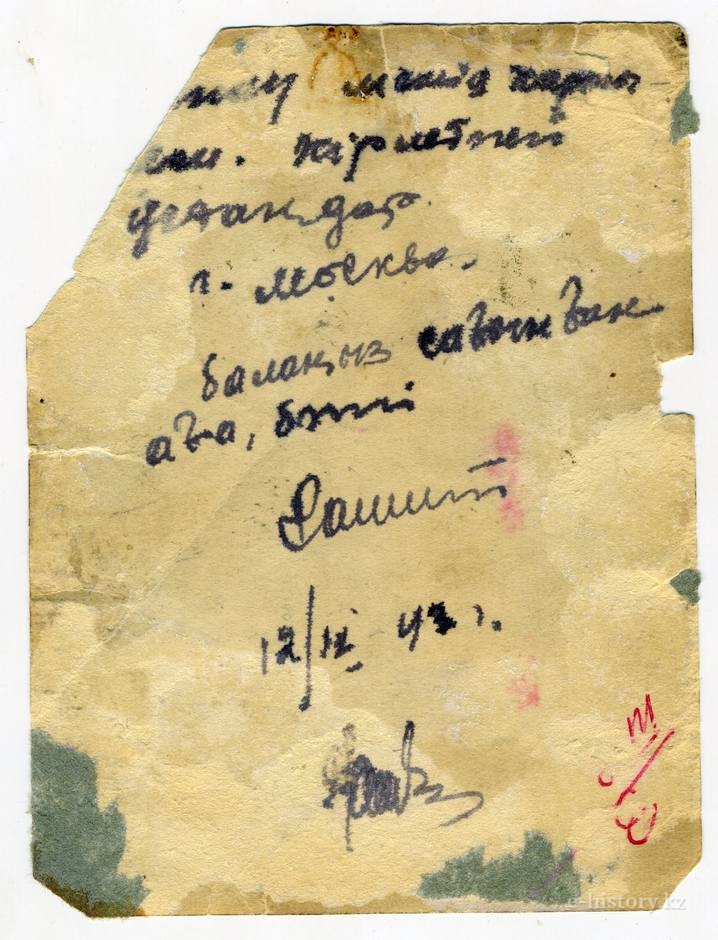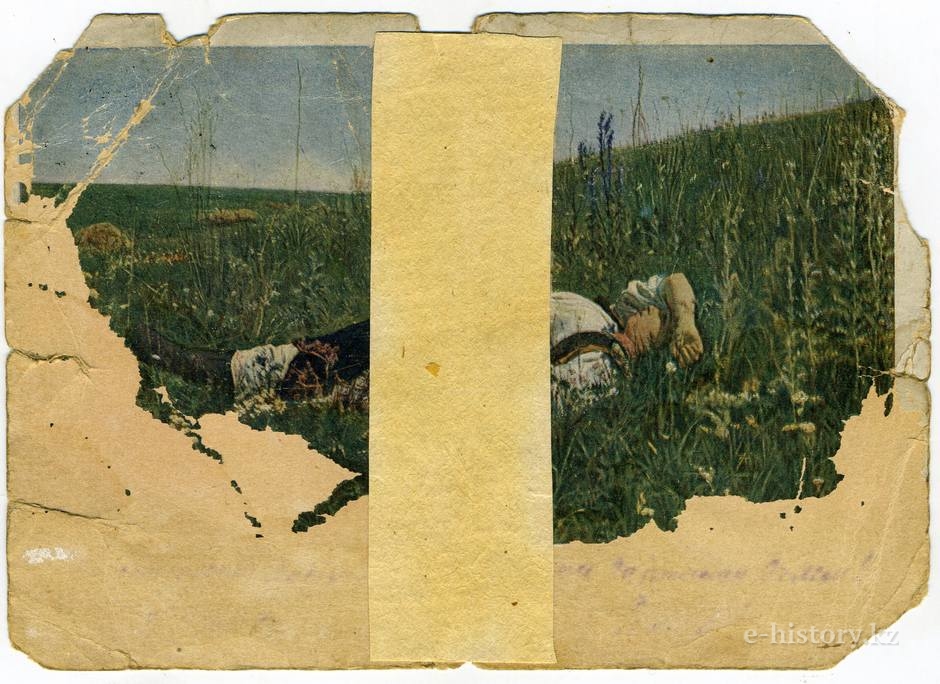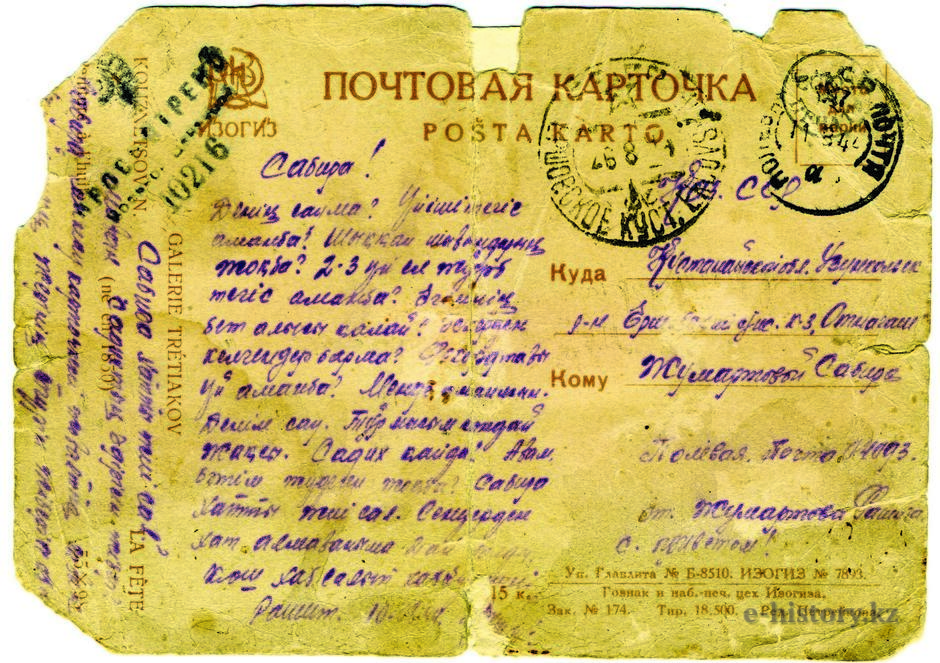
Rashit Zhumartov went to the war in winter 1943 when he reached the age of 18. No one can say how it was.
In peacetime Rashit worked as a teacher in the village of Ubagan. It is located in the northernmost part of Kostanay region, on the border with Russia. Most likely he went to the front as a volunteer. It could be possible because every healthy man wished to protect the native land. But we will never learn the details. It is known that he was conscripted by Mendygarinskiy provincial recruitment office. There is now any information about the place where he underwent military training and why he went to a guardian mortar division. But some of the things could be understood from his letters to his relatives.
It seems that Rashit Zhumartov was a good and literate person. He graduated from the seventh grade of a secondary school. For that time, it was enough to start teaching other people. Being a person under 18 years old he became a teacher — not everyone can achieve the same. No one mistake can be found in his letters to the family from active service. Moreover, all of them were written in beautiful calligraphy. Three months before his departure to the front, he married Sabira and wrote her regularly. He wrote cheerfully, gave the best regards to his relatives and neighbors and asked about their life.

Sometimes with the aim to give a glimpse of the place where he fought Rashit wrote his messages on postcards. Here is one depicting the State Library named after Lenin in Moscow. It means that Rashit Zhumartov was in the capital.

Here is another one postcard. The damaged card depicts somebody lying in the grass. The person on it wears a costume which looks like Moldovan. That is why Rashit’s relatives thought it was sent from Moldavia.

But the truth is the postcard depicts a picture by Nikolay Kuznetsov entitled "V prazdnik (Malorossiyanka, otdykhayushchaya na trave)" ("At the feast (The girl from Malorossiya lying in the grass)"). It means that the soldier was in Ukraine or just mistakenly believed that it was Moldovan costume.
Rashit’s latest letter was dated 11 August 1944: "Sabira, — he asked his wife, — How have you been keeping? Is everything ok at home? Have all our neighbors survived? How are the relatives getting on? Has anybody returned from the front? What harvest do you expect to have this year? How are my parents? I’m in good health and everything is ok. Sabira, write me as much as possible. Don’t lose this postcard. It is a view on the place where I’m staying now...".

In September 1944 the Zhumartovs received the notification of his death. The document has not been preserved. Maybe nobody wanted to keep the paper with such terrible message. So no one relative knew where Rashit was buried. His parents recalled that it might be in Hungary or, maybe, in Romania. As people become older their memory weakens.
Rashit’s younger brother Tulegen Alimbayev tried to find some details of his relative’s death, but without any effect. Fortunately, over the time archives became accessible, Internet appeared. So the necessary information on the location of his grave was received. There was even a photo of a Moldovan village, address and contacts of the head of administration — Haralambie Lazer.

Head of the administration of the village of Menzhir, Moldavia
Tulegen Alimbayev mustered his courage to dial the number. Haralambie Lazer was a sensitive person. He spoke of the battles near the village during the Great Patriotic War and told that local residents moved all remains to the graves and some of them were recognized. Finally, he invited Tulegen to visit their village.
In this village, not far from the administration, Tulegen found a memorial stone with two names carved on it — Rissian and Kazakh. They were Private Rashit Zhumartov from Kazakhstan and Lieutenant Novitskiy Dmitriy from Omsk region, Russia. The fought shoulder to shoulder and were buried in one grave.

In the same village, Tulegen Alimbayev met a witness of the fighting. The war was nearing its final. In August 1944 the local village survived one of the major battles of the Great Patriotic War — Jassy—Kishinev military operation. The village of Menzhir was at the epicentre of the battle. The second and third Ukrainian armies under the command of R. Malinovskiy and F. Tolbukhin had to surround and defeat main forces of the enemy and then try to break through into Romania. It was planned to accelerate the liberation of Moldavia, South Ukraine and Romania.
The operation was successful. But nobody could predict everything. The headquarters of the division, where Rashit Zhumartov served, stood on a high hill. This position allowed observing the battle very well. But from the rear it was attacked by a Romanian division breaking through the encirclement. Everything happened quickly and nobody could do anything. Romans killed all the soldiers and officers of the division, including Rashit.
Vladimir MOTORIKO
Regional newspaper "Kostanay news" kstnews.kz
